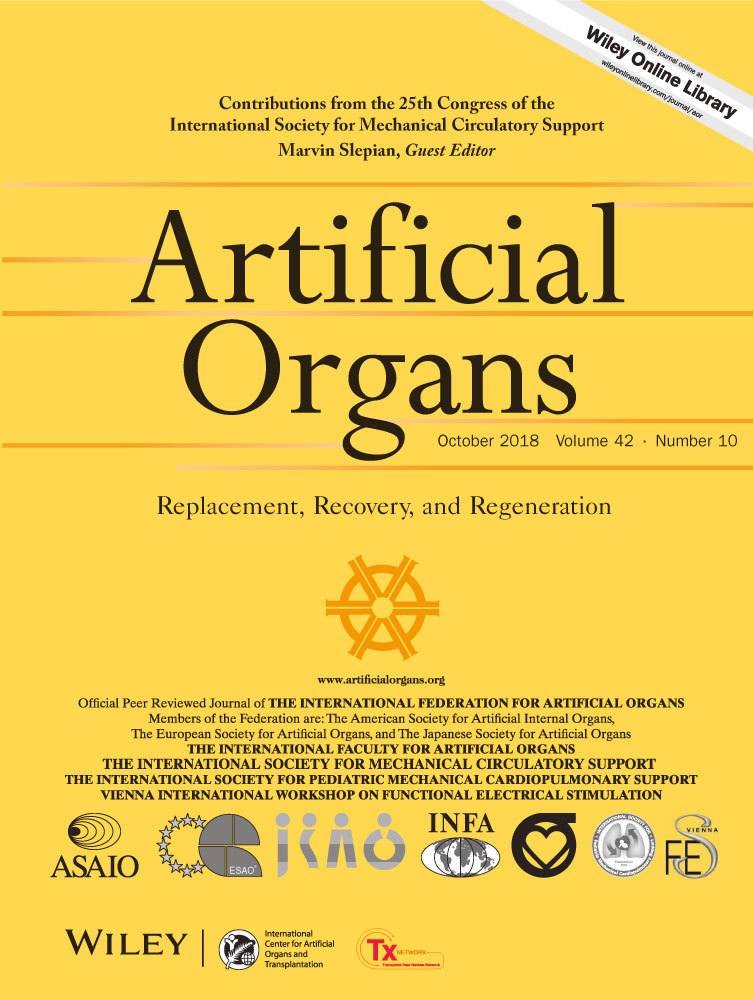Accurate Method of Quantification of Aortic Insufficiency During Left Ventricular Assist Device Support by Thermodilution Analysis: Proof of Concept and Validation by a Mock Circulatory System
Presented in part at the 25th Congress of the International Society for Mechanical Circulatory Support held October 15–18, 2018 in Tucson, AZ, USA.
Abstract
Aortic insufficiency (AI) is an intractable complication during long term left ventricular assist device (LVAD) support. Conventional evaluation of AI depends on ultrasound evaluation, which is mainly a qualitative, not a quantitative method. The pathophysiology of AI during LVAD is shunt formation. Conversely, the methods to quantify the shunt of congenital heart disease are already established, and among these is the thermodilution technique. To develop an accurate quantification method for AI (namely, a shunt), we have adopted this conventional thermodilution technique. The purpose of this study was to determine whether this technique could calculate the shunt magnitude accurately in a simulated cardiac circuit. The magnitude of AI was represented by the recirculation rate (RR), defined by regurgitant flow (RF) divided by pump flow (PF). A mock circulatory system for an LVAD endurance test (Laboheart NCVC; Iwaki & Co., Ltd, Tokyo, Japan) was used. A centrifugal LVAD was equipped in the Laboheart in parallel from the left ventricle to the aorta. A parallel shunt circuit was created across the aortic valve to mimic AI. To control the magnitude of AI, the resistance of the AI circuit was changed. Heart failure was simulated by controlling the parameters of the Laboheart. The LVAD was driven in full bypass condition, confirming that the heart did not eject forward flow via the aortic valve. PF, RF, and the temperatures of two points of the outflow graft measured with two thermistors were monitored. Analyses were started after confirming that circuit water temperature was the same as room temperature. Hot water was injected from a port between the two thermistors of the outflow conduit. The time–temperature curves of both thermistors were recorded, and RR was calculated. Two values of RR calculated in two different ways (by analyzing thermistors and by calculating from flowmeter values) were compared. Multiple measurements were done by changing the magnitude of AI. The existence of AI could be easily confirmed by analyzing the temperature data. There was a good correlation between RR by thermistor and RR by flowmeter data (r = 0.984). Furthermore, the two RR values were almost the same. This novel technique could provide an accurate method for quantifying AI during LVAD support. This method can be clinically applied by left-sided cardiac catheterization if a dedicated catheter with two thermistors and an injection hole is developed.




